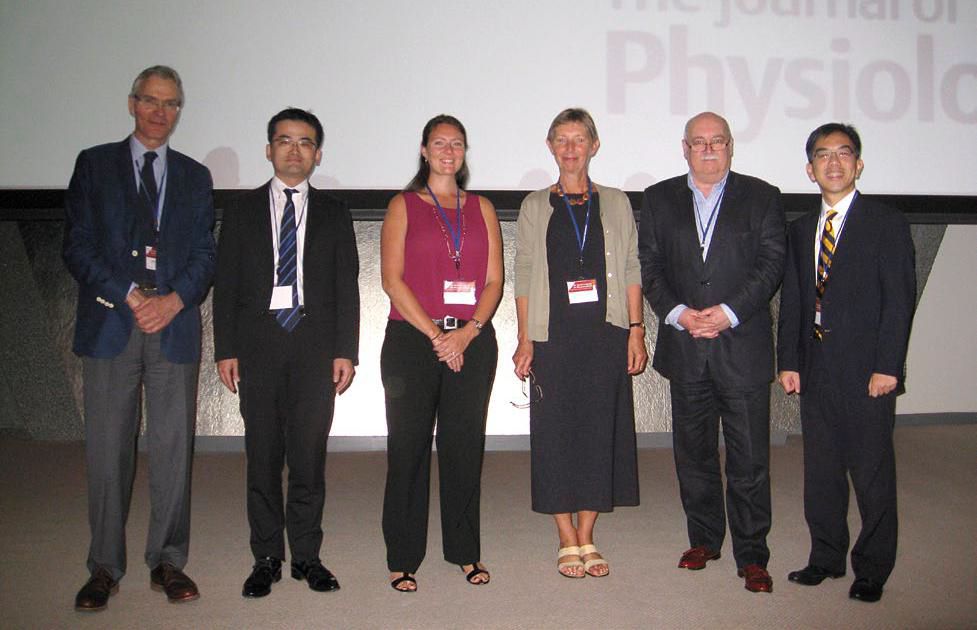
Physiology News Magazine
The Journal of Physiology supports a symposium at the World Congress of Microcirculation in Kyoto, Japan
Events
The Journal of Physiology supports a symposium at the World Congress of Microcirculation in Kyoto, Japan
Events
Geraldine Clough, Professor of Vascular Physiology
Institute of Developmental Sciences, University of Southampton, UK
https://doi.org/10.36866/pn.101.21
25–27 September 2015, International Conference Centre, Kyoto, Japan

Our speakers from the UK, USA, Singapore and Japan got together through the sponsorship of The Journal of Physiology in the beautiful settings of the Kyoto International Conference Centre, to discuss ‘Microvascular plasticity and developmental priming: impact on human health’. The symposium was organised by Geraldine Clough and Giovanni Mann and formed part of the highly successful 10th World Congress of Microcirculation.
Mark Hanson from the University of Southampton UK opened proceedings with an examination of the mechanistic basis and wider implications of adopting a developmental perspective on human ageing. Professor Hanson used a life course model to place ageing in the context of the attainment of peak capacity for a body system, such as the cardiovascular or musculo-skeletal system, starting in early development when plasticity permits changes in structure and function induced by a range of environmental stimuli, and ending in decline.
Phoebe Stapleton from the Department of Physiology and Pharmacology, West Virginia University USA went on to talk about the impact of nanoparticle exposure during pregnancy and its detrimental effects on maternal and foetal health at each stage of gestation. There are currently no safety guidelines associated with engineered nanoparticle exposure during pregnancy and Dr Stapleton described how exposures prior to conception, as well as during gestation, may have long term consequences associated with nanoparticle translocation, pulmonary inflammation, and microvascular dysfunction.
The next contribution came from an early career investigator, Dr Yuichiro Arima from the Department of Cardiovascular Medicine, Kumamoto-University, Japan. Dr Arima presented his work using the multi-photon microscopy to explore the heterogeneity of the coronary vasculature and how
under-nutrition during gestation can influence the proper development of heart and coronary circulation in low birth weight mouse offspring.
The symposium was concluded by Professor Tien Wong who described his recent work using retinal vascular imaging in children and adolescents directed at understanding cardiovascular disease (CVD) risk in early life. These studies show that the same retinal vascular changes linked with stroke, hypertension and CVD were associated in children with lower birth weight, shorter gestational age, hypertension, overweight/obesity, and type-1 diabetes.
Together our speakers eloquently supported the paradigm of the symposium (and the meeting as a whole) that the microcirculation is a site for pre-clinical processes underlying the development of CVD in adulthood and that it may offer an accessible and relevant marker for the assessment and mechanistic understanding of later risk.
Review articles from the symposium talks will be published in a Special Issue of The Journal of Physiology focused on Cardiovascular and Skeletal Muscle Ageing to tie in with The Physiological Society’s ‘Understanding Ageing’ year in 2015. This Special Issue aims to cover all areas of physiology, with an emphasis on the effects of ageing on cardiovascular and skeletal muscle function, including cardiac and muscle performance in exercise.

